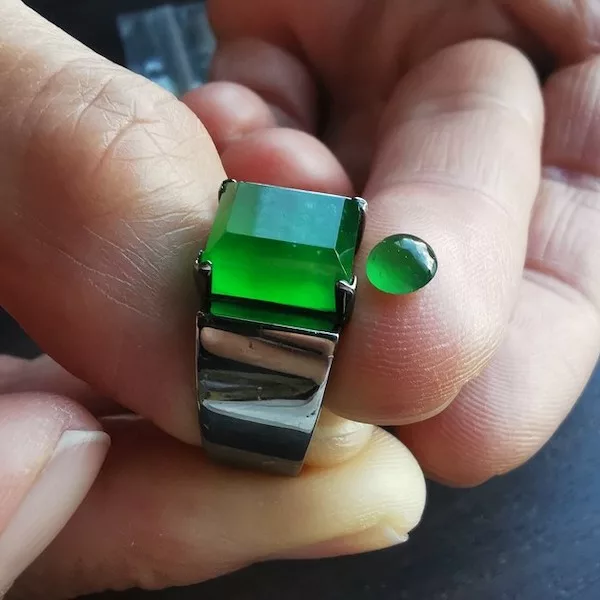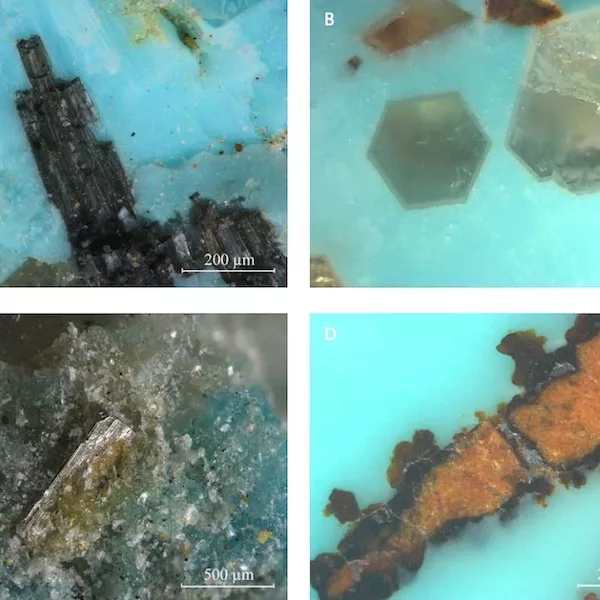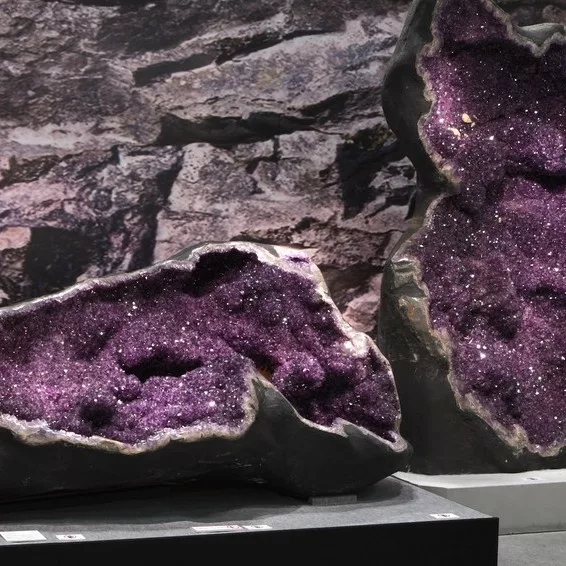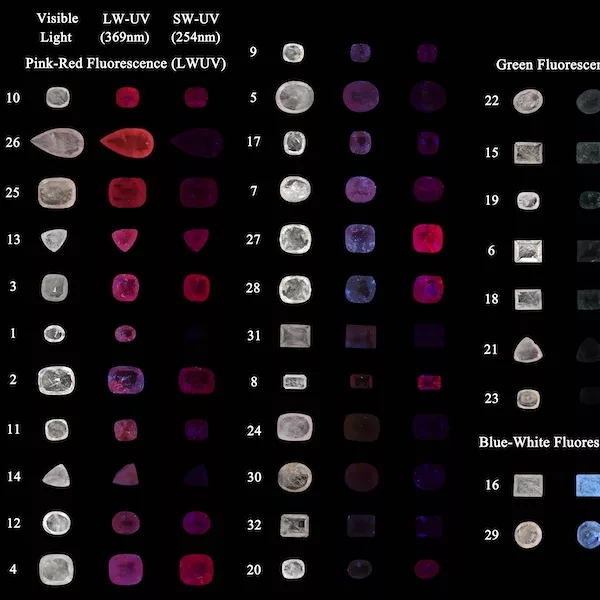Geographic Origin Determination of Fei Cui: A comparison of high-quality green Fei Cui from Myanmar, Guatemala, and Italy
Keywords: Origin determination, Fei Cui, Jadeite jade, Omphacite jade
Fei Cui is a kind of jade that is defined as a granular to fibrous polycrystalline aggregate composed solely, or principally of any of the following or any combination of the following: jadeite, omphacite and kosmochlor (GAHK, 2016). For decades, Myanmar was the only source of “Imperial green” Fei Cui. Guatemala is another historical source of jade. Since 2021, “Imperial green” Fei Cui from Guatemala has been getting more popular in China, especially after a new mining area was discovered in Morales, Izabal Department in Guatemala. Besides, a small amount of high-quality Italian Fei Cui also appeared in the market in the past four years. To examine the possibility of origin determination on Fei Cui, a set of high-quality green Fei Cui from Myanmar, Guatemala, and Italy were collected and examined.
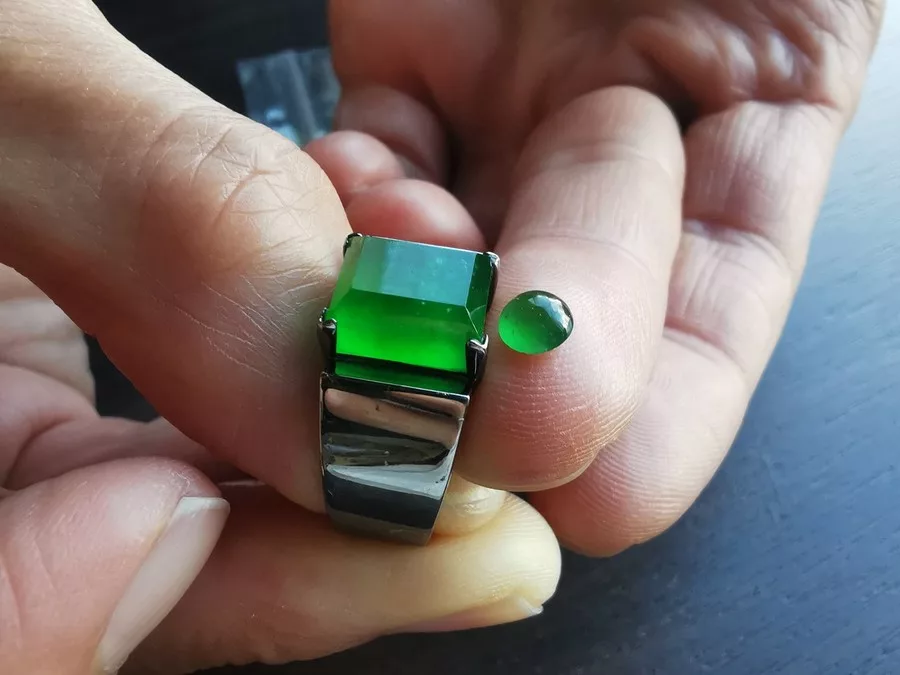
Conventional gemmological tests were carried out, including determination of specific gravity, refractive index, and microscopic observation. All samples’ specific gravity and refractive index and thus are within the acceptable range (SG: 1.65-1.68; RI: 3.25-3.45) of Fei Cui Standards of the GAHK and the GIT (GAHK, 2016; GIT, 2022).
FTIR spectroscopy is the routine test in Fei Cui Standards for determining the identity and the treatments (GAHK, 2016; GIT, 2022). Based on the FTIR result, all samples were found to be Fei Cui and untreated. FTIR spectroscopy is also frequently used in research to examine the dominant clinopyroxene phase in this polycrystalline material (Ou-Yang et al., 2003; Liu et al., 2010; Franz et al., 2014; Zhang et al., 2022) and classify Fei Cui into three groups based on their main mineralogical constituent (GAHK, 2016). All investigated Italian samples are omphacite jade with an unusually shifted Si-O-Si asymmetric vibration peak at around 1100 cm-1, which was also observed in Mn-bearing violet omphacite from Italy (Diella et al., 2021). Most of the Myanmar samples are classified as jadeite jade and a few samples are omphacite jade. In contrast, most of the Guatemalan samples are omphacite jade and a few samples are jadeite jade. Surprisingly, the dominant mineral phase in Guatemalan samples relates to the colour. We found that the top colour-graded samples are jadeite jade. A recent study on the mineralization stages also found that jadeite is the major mineral composition in green-coloured Guatemalan Fei Cui (Wang, 2022).

EDXRF and LA-ICP-MS were used to analyse the chemical composition in the samples. After statistical calculations, principal component analysis (PCA) was applied to investigate the classification power of two chemical analysis tools. EDXRF showed a confident differentiation power in the Fei Cui localities (Figure 2a). The Italian samples are separate from the other two localities. In contrast, an overlapping between Myanmar and Guatemala is observed in the PCA score plot. The differentiation power of EDXRF on separating Guatemala and Myanmar Fei Cui is 92% and 75% respectively. However, the mineral composition in the samples highly influences the EDXRF results. The PCA score plot of LA-ICP-MS (Figure 2b) displays a clear separation among three localities. The differentiation power of LA-ICP-MS is 100%. In the brief of the chemical difference, the Mg concentration in Burmese samples is the lowest due to the jadeite jade dominated. Italian samples showed the highest Cr content among the three localities, while the Guatemalan samples have the highest Fe abundance which aligns with the previous studies on Guatemalan jadeite jades (Liu, 2019; Zhang and Shi, 2022). Raman spectroscope reflects the mineral component in the Fei Cui. (GIT, 2022) The Raman results are consistent with the FTIR and chemical analysis result from EDXRF.
References:
- Diella, V., Bocchio, R., Caucia, F., Marinoni, N., Langone, A., & Possenti, E. (2021). New insights for gem-quality Mn-bearing diopside-omphacite, violane variety, from Saint Marcel (Val D’Aosta, Italy): Its trace elements and spectroscopic characterization. Minerals, 11(2), 171.
- Franz, L., Sun, T. T., Hänni, H. A., De Capitani, C., Thanasuthipitak, T., Atichat, W. (2014). A comparative study of jadeite, omphacite and kosmochlor jades from Myanmar, and suggestions for a practical nomenclature. Journal of Gemmology, 34(3), 210-229.
- The Gemmological Association of Hong Kong (GAHK). (2016). Standard Methods for Testing Fei Cui for Hong Kong (HKSM/FCT-2016), GAHK. http://www.gahk.org/ attachment/fc_std_eng.pdf
- The Gem and Jewelry Institute of Thailand (GIT). (2022). The Gem and Jewelry Institute of Thailand Standard-Testing of jade and Fei Cui (GIT 1013.1-2564), GIT.
- Liu, S.I., Peng, M.S., & Chen, H.C. (2010). A study of new high quality “imperial green” omphacite jade (Fei Cui) (in Chinese), Acta Mineralogica Sinica, 2010(suppl.), 26-27.
- Liu, S.I., Ouyang, C.M., & Ng, F.Y. (2015). The application of VPSEM-Raman coupled system in studying Fei Cui. Proceedings of the 34th International Gemmological Conference IGC, Vilnius, Lithuania, 76-79.
- Liu, S.I. (2019). Identification of Fei Cui and the interpretation of regional testing standard. NGTC forum: Identification and Evaluation of Fei Cui, Hong Kong, China.
- Ou-Yang , C. M., Qi, L. J., Lin, H. S., & Kwok, B. (2003). Recent studies on inky black omphacite jade, a new variety of pyroxene jade. Journal of Gemmology, 28(6), 337-344.
- Wang, L., Zhang, H., Liu, J., Wang, L., Ou-Yang, Q., Liu, D., Liu, W. (2022). Mineral component and genesis of highgrade green jadeite jade from Guatemala (in Chinese), Journal of Gems & Gemmology, 24(5), 11-30.
- Zhang, Y., & Shi, G. (2022). Origin of Blue-Water Jadeite Jades from Myanmar and Guatemala: Differentiation by NonDestructive Spectroscopic Techniques. Crystals, 12(10), 1448.
Acknowledgements:
The authors are grateful to Tommy Kin-Wah Tsui, Chun-Kit Lau and Timothy Sheung-Yin Li of China Gems Laboratory Limited for providing FTIR spectroscopy and Raman spectroscopy.

